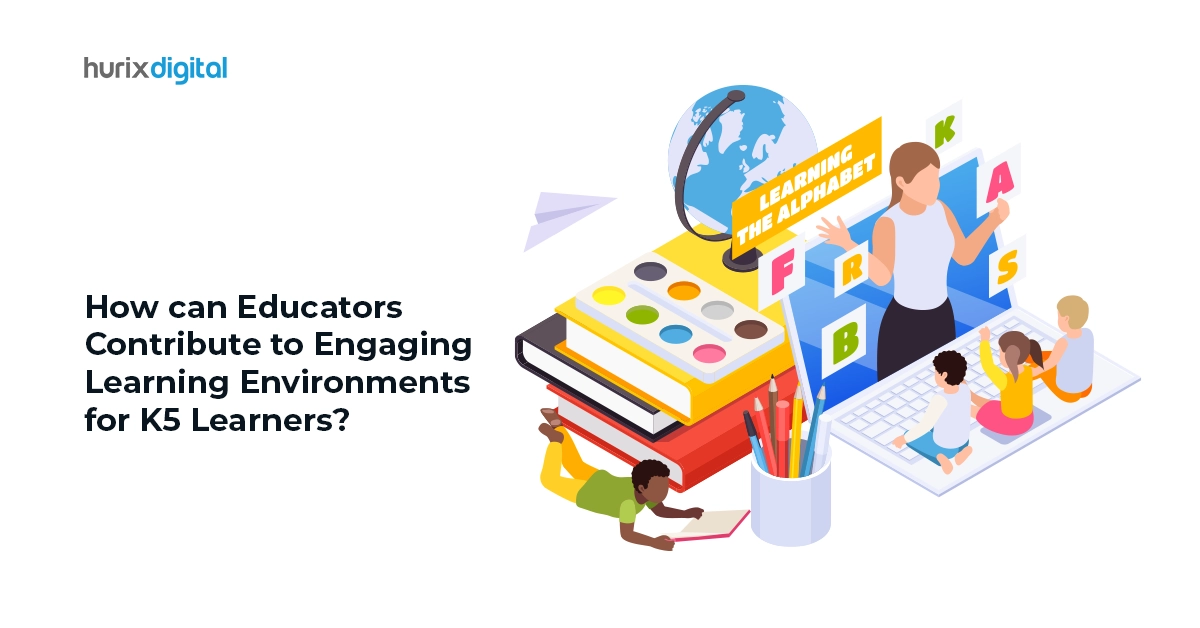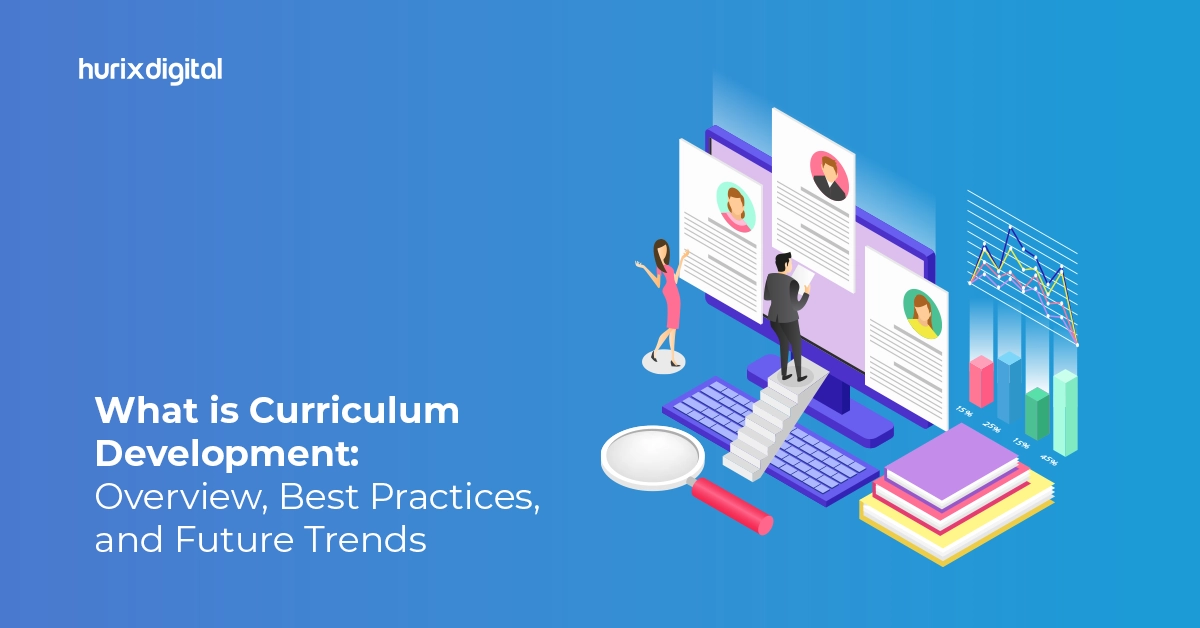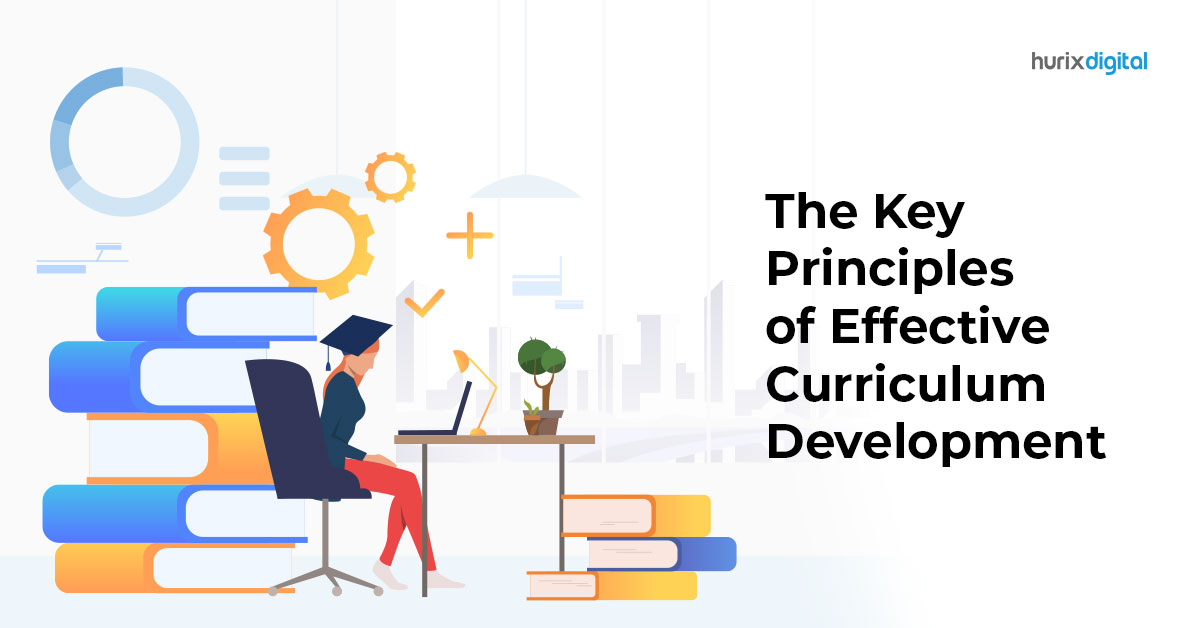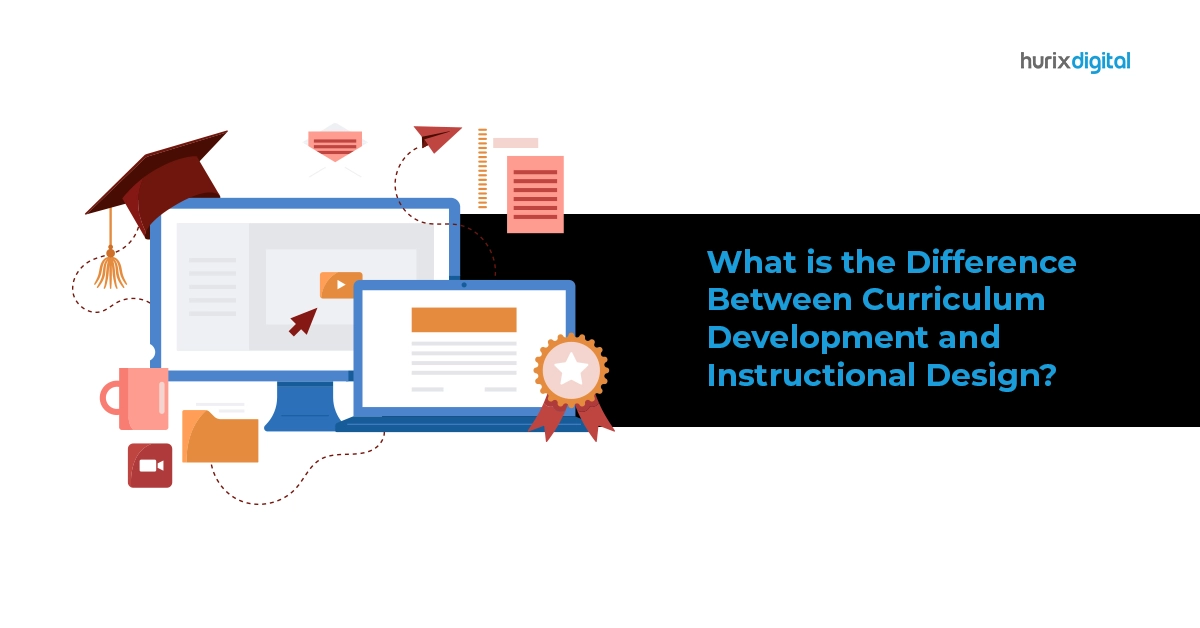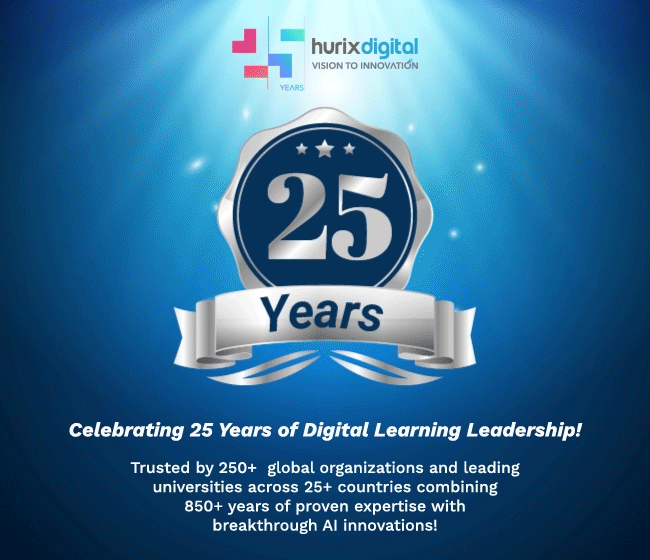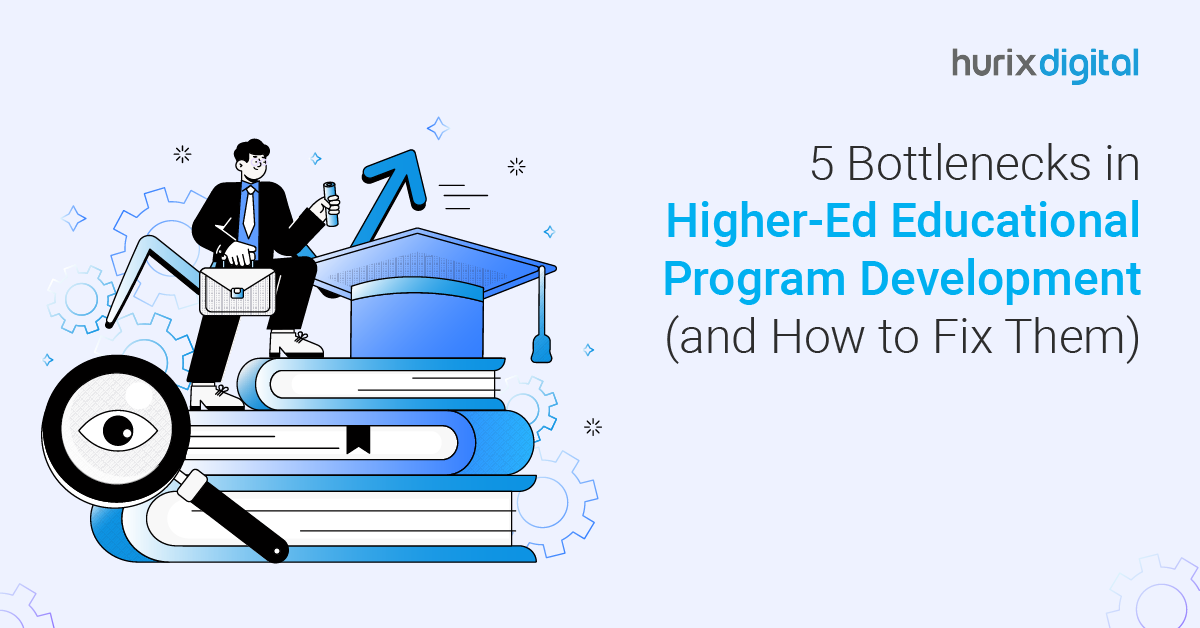
5 Bottlenecks in Higher-Ed Educational Program Development (and How to Fix Them)
Summarize with:
If you’re struggling with the complexities of higher-education curriculum development, you’re not alone. Many program directors and instructors face similar barriers.
Dealing with evolving needs, outdated content, and the constant pressure to innovate can be difficult. That’s not all! The National Education Policy 2020 adds a layer of urgency, calling for a complete overhaul.
So, how do you transform your strategy and address the issues that stand in your way? We answer this in this post. Read on!
Table of Contents:
5 Bottlenecks to Explore in Higher-Ed Educational Program Development
Higher education curriculum development can be challenging due to several bottlenecks that impact efficiency and innovation.
Program directors often encounter these obstacles:
1. Outdated Curriculum Content
Your curriculum—the backbone of higher education—holds immense power. But what if it’s not relevant and up-to-date? It leaves learners without the latest knowledge and skills needed by employers.
Now, that’s a significant hurdle, restricting student preparedness for the modern workforce. So, how do you overcome this issue? Check out these pro-fixes for enhanced curriculum development:
Solution 1: Conduct Regular Curriculum Reviews
- Review the pedagogy annually or bi-annually to ensure it remains relevant.
- Engage industry experts and alums. They’re the compass pointing to updates on improving higher-ed programs.
- Create a feedback loop with recent graduates. The result? A goldmine of valuable insights on the real-world applicability of your coursework.
Solution 2: Incorporate the Latest Research and Technology
- Update courses with the latest research findings and tech refinements.
- Extend internship and co-op prospects within the curriculum to provide practical experience.
Solution 3: Form Industry Partnerships
- Collaborate with industry leaders to co-create a curriculum that meets job market demands.
- Launch a podcast series where experts discuss the latest challenges and breakthroughs.
These program development strategies maintain a dynamic, captivating, and relevant curriculum. Use them to support your institution’s reputation for excellence.
Also Read: Top 7 Companies Providing Educational Content Development Services
2. Technology Gap
Technology is transforming higher education. With eLearning and immersive education markets soaring at $316.2 billion and $33.2 billion, respectively, there is a significant opportunity for growth.
But if your institution isn’t keeping up, you miss out big time. An outdated tech system leaves your curriculum behind, making it challenging for students to engage and learn. Fret not! Here are some tips to ensure your program stays relevant:
Solution 1: Modernize Classroom Technology
- Integrate emerging technologies—virtual reality, AI, or blockchain—to optimize the learning experience.
- Say yes to smart classrooms. Use interactive whiteboards and advanced projectors for immersive presentations.
Solution 2: Incorporate Online Learning Platforms
- Use eLearning tools to enable online learning and provide resources accessible anytime, anywhere.
- Offer a blended learning environment. Combine traditional classroom methods with online learning to cater to diverse learning styles.
Solution 3: Emphasize Cybersecurity
- Protect student data and privacy. Ensure that all digital platforms and tools follow the highest industry standards.
- Include cybersecurity training in the program to teach learners about safe online practices.
Program directors, in this context, should focus on leveraging these strategies to bridge the technology gap and enhance student engagement.
3. Content Accessibility and Understanding
Beyond being current and relevant, your educational content must be understandable and accessible to every student. But here’s the reality check: some students still struggle with barriers—physical, sensory, mental, or emotional.
It hinders their full participation in learning, leading to lower engagement and comprehension. Despite policies and regulations promoting accessibility, there’s room for improvement.
Here’s how to ensure your content resonates with every learner:
Solution 1: Simplify Language and Terminology
- Avoid using slang and complicated words. Present information in bite-sized, digestible sections that everyone can understand.
- Develop glossaries and quick reference guides to help students understand key terms.
Solution 2: Leverage Multimedia
- Use captivating videos, animations, and infographics to boost engagement.
- Create interactive, gamified simulations that allow learners to understand complex concepts better.
- Include captions in instructional videos to aid learners with hearing impairments.
Solution 3: Apply Universal Design for Learning (UDL) Principles
- Present information in text, audio, and video formats to adapt to diverse learning styles.
- Add alt text to images so that visual-impaired students can understand the content.
Moreover, choose a tool that offers a comprehensive suite of accessibility services. These must include a Web Accessibility Audit, WCAG and ADA Compliance, and more.
4. Faculty Fatigue
Instructors are the foundation of a robust education system, providing essential guidance and knowledge to students. But what happens when they’re exhausted or do not feel valued? It decreases their productivity, lowers morale, and declines teaching quality.
Handling this pressing concern is crucial for maintaining a high education standard. Follow these higher education development best practices to get started:
Solution 1: Foster Work-Life Balance
- Offer flexible working hours and remote work options to inspire faculty to manage their workload.
- Provide access to mental well-being aids, such as counseling and stress management workshops.
Solution 2: Encourage Professional Development
- Host engaging conferences to keep faculty updated on the latest trends in higher education.
- Offer training on creating and evaluating assessments. It will ensure your faculty can measure student progress and adjust teaching methods.
Solution 3: Recognize and Reward Efforts
- Celebrate faculty contributions to boost their morale and motivation.
- Provide incentives like grants and awards to encourage them to pursue innovative teaching methods.
These strategies will ensure educators remain engaged, motivated, and effective. It will, in turn, enhance the efficiency and effectiveness of higher-ed curriculum development.
5. Slow Approval Processes
Does it feel like necessary curriculum changes take forever to get approved? This issue frustrates all stakeholders and suppresses your institution’s ability to adapt to new trends.
The result? A stagnant academic environment has hindered innovation and delayed progress. So, how do you overcome this problem? Check out these pro-fixes for enhancing educational programs:
Solution 1: Streamline Approval Workflows
- Use digital platforms to review and manage curriculum modifications.
- Create a centralized system where stakeholders can quickly access proposed changes.
Solution 2: Empower Agile Committees
- Form smaller panels with the authority to make quick decisions.
- Schedule regular, frequent meetings to maintain momentum in the approval process.
- Develop clear policies for curriculum proposals to ensure completeness and consistency.
Also Read: Are Augmented Reality Textbooks a Distraction or an Educational Aid?
Final Thoughts
Overcoming the bottlenecks in higher-ed curriculum development demands a strategic and proactive approach. Program directors can create dynamic, inclusive, and industry-aligned education programs by tackling these challenges head-on and using the given solutions.
If you’re a program director seeking transformation, Hurix Digital offers expertise and tools to drive this evolution. From enhancing content accessibility to integrating cutting-edge technology, we deliver tailor-made solutions for educational program development.
Partner with us to meet the evolving needs of higher education and shape the leaders of tomorrow!
Summarize with:

Senior Vice President
A Business Development professional with >20 years of experience with strong capability to sell new solutions and develop new markets from scratch. New Market Entry Specialist with experience working in the largest emerging markets. Exceptional experience in conceptualizing, ideating and selling new learning technologies like VR AR, etc. across multiple industry verticals.
 We’re live! Explore the all-new
We’re live! Explore the all-new 
